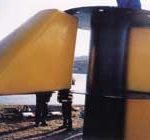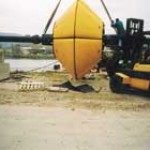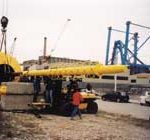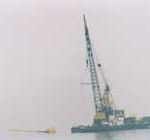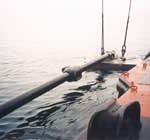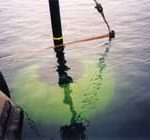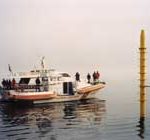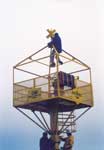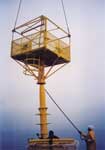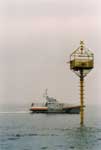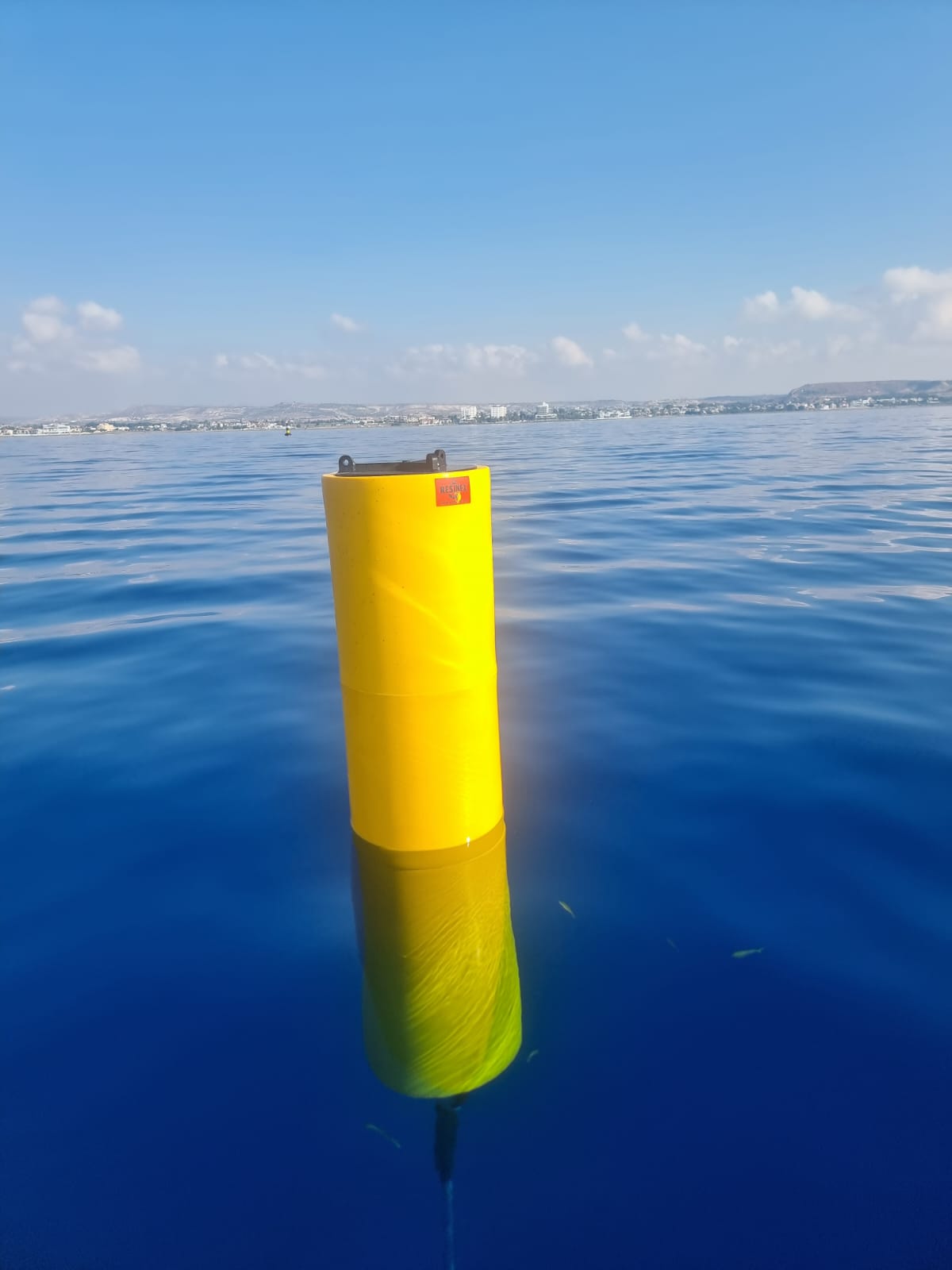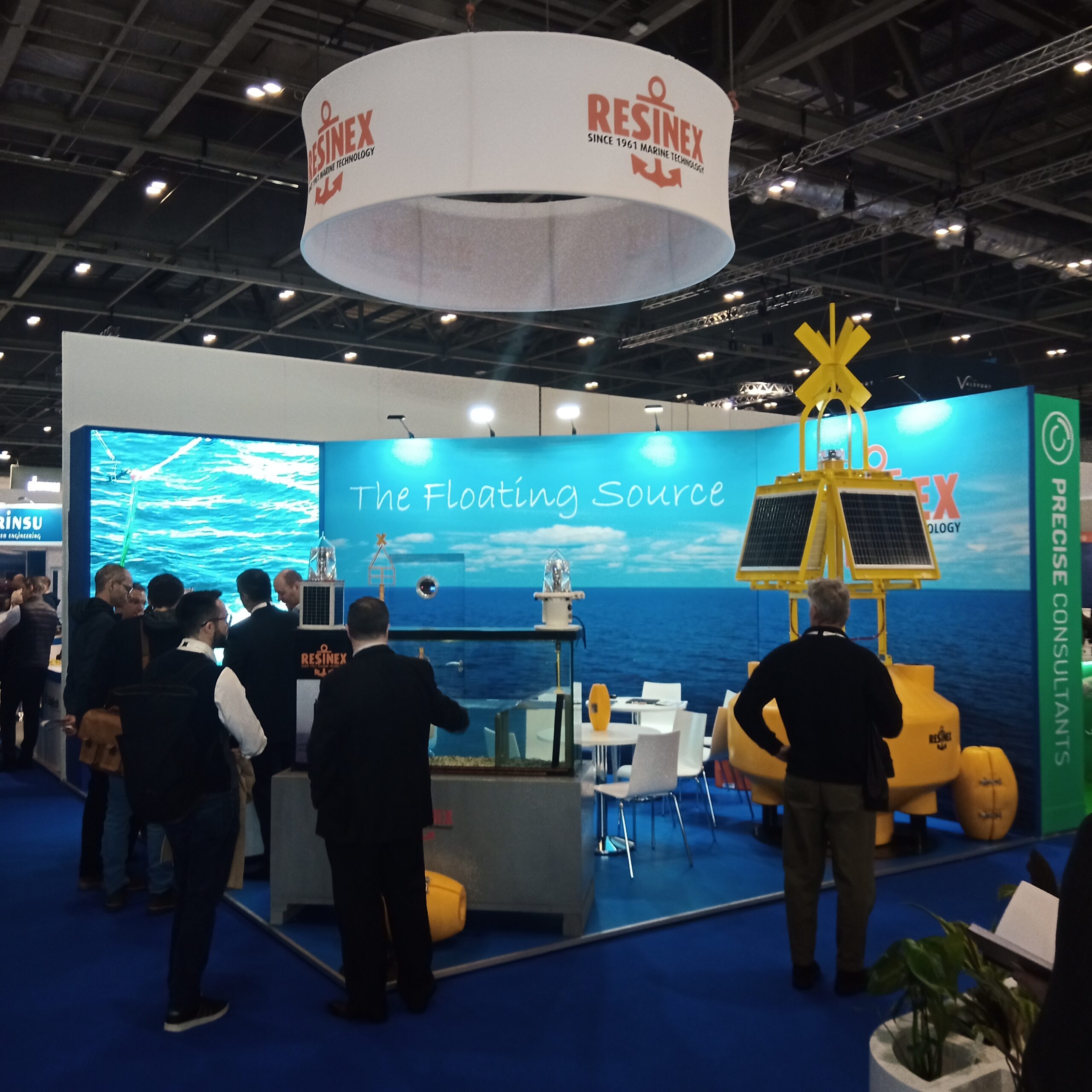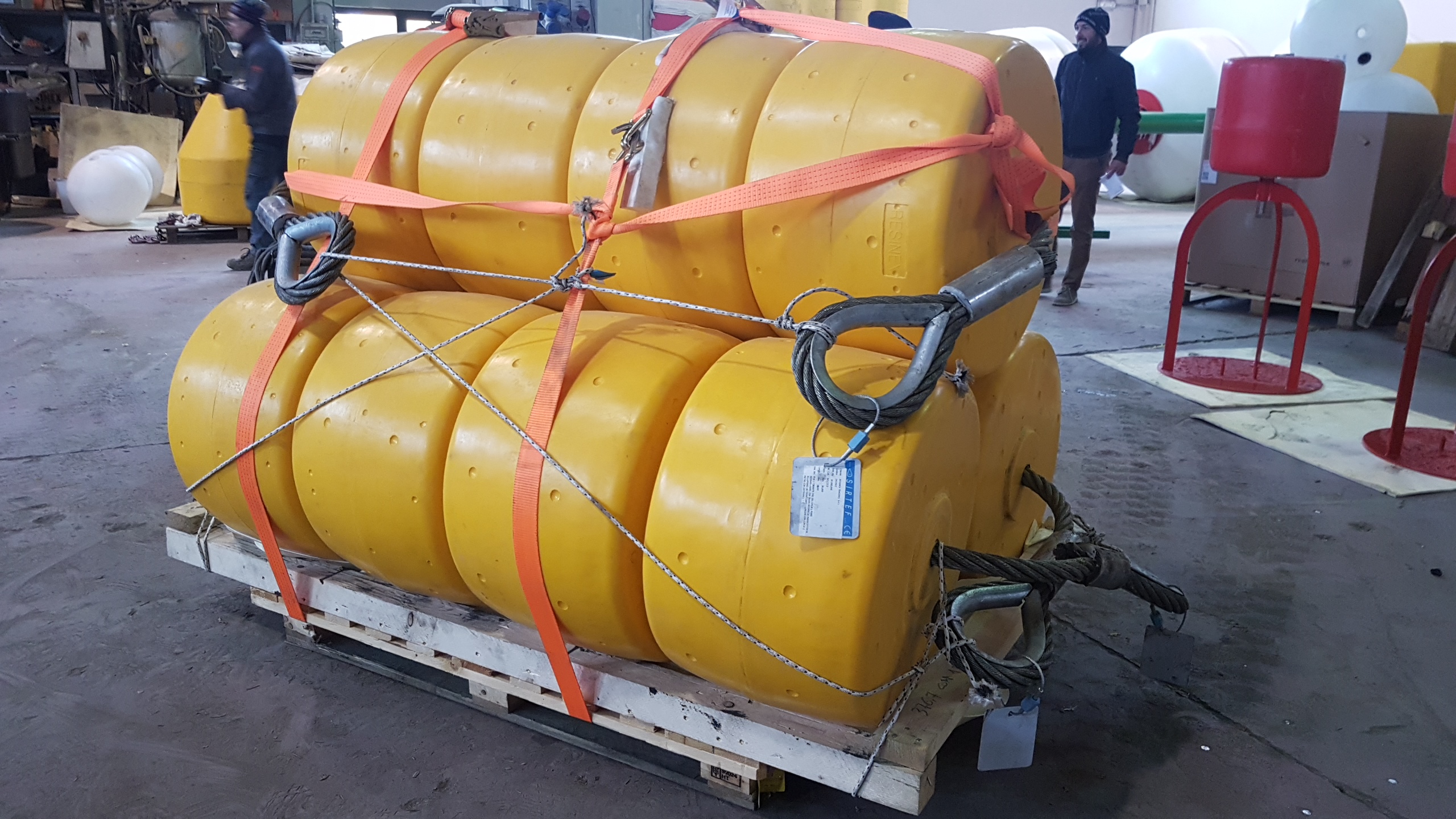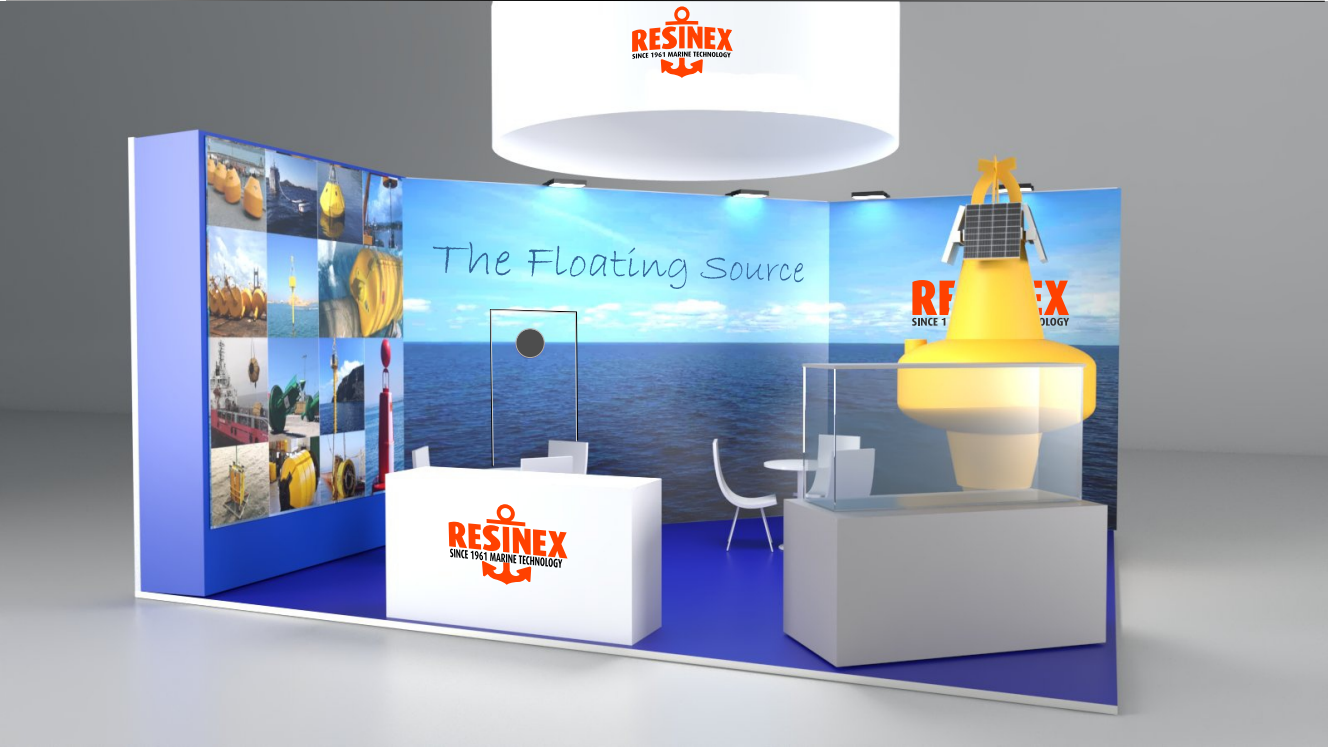In 2000, Resinex has been entrusted by C.N.R. (National Research Council – Istituto Talassografico of Trieste) with a contract to study and supply a floating platform able to be a reliable aid to navigation and, at the same time, to host various instruments to study meteo-marine conditions in the Gulf of Trieste. So, Resinex has probably developed the largest elastic beacon ever built. Surface of platform is 6,25 sq.mt, with a height from sea surface of 11 meters. Sea depth is 24 meters. To match the extraordinary wind and sea conditions (170km/h wind speed and 6mt high waves) Resinex has studied a particular modular tronco-conical shaped float ( 14,7tons net buoyancy) able to support pipes and platform in such conditions, giving a maximum inclination of 10 degrees. This type of buoy, very stable and, at the same time, elastic to sea stress can be easily deployed and used in all the seas where signals and easy-to-use platforms are necessary even in extreme sea and wind conditions. High performances, easy installation In spite of beacon size, assembling and laying operations have proved to be particularly simple: it took 5 people and 9 hours to carry out assembling operations in Trieste. From the moment the pontoon (80 tonnes) arrived on the place it took only two hours for the positioning.
- A
- B
- C
- D
- E
- F
- G
- H
- I
- K
- L
- M
A: the float is mounted on the float metallic structure.
B: now the UFO can fly!
C : the “unidentified” float is positioned on the pipe“.
D: the upper part is linked.
E : float, metallic part and sinker are carried from the pontoon to the laying place.
F: detail of the sinker (40 tonnes in air) linked to the metallic structure.
G: the sinker is lowered.
H: the float is going down.
I: the upper part emerges from the water.
L: when platform is ready, details are assembled.
K: the platform (6,25 sq.mt) is easily layed on the upper part of the pipe.
M: the finished platform is inspected for the first time by the Italian Coastguard!

